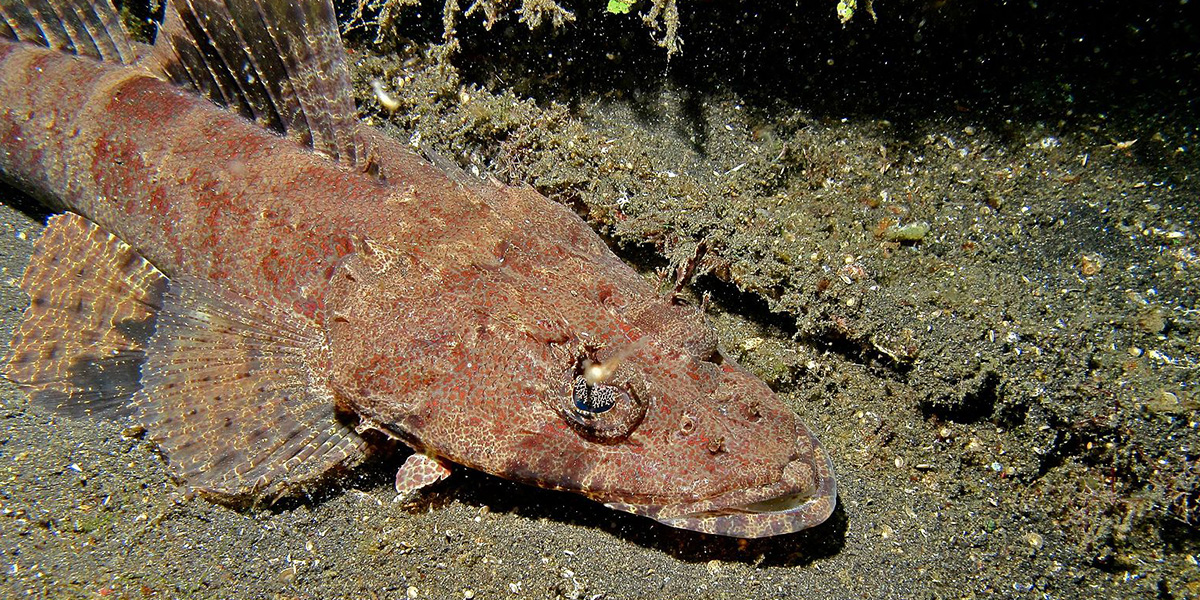When it comes to surviving the ocean, sometimes the best defense is the best disguise. Equipped with reflexive shape and color changes, many sea creatures have evolved to become masters of camouflage, blending perfectly with their various surrounding habitats.
For smaller animals, such adaptability proves essential when it comes to confusing and evading potential predators. The translucent fins of the leafy sea dragon, for instance, look almost identical to the fish’s seaweed home, allowing it to hide easily in plain sight.

Other aquatic animals use camouflage to outsmart unsuspecting prey, giving the hunters the element of surprise with minimal energy output. Take the crocodile fish, for example. Masked by the sandy seafloor associated with shallow water coral reefs, the crocodile fish will lie in wait for hours to ambush a passing crab or minnow.

From elaborate physical mutations to instinctive shifts in pigmentation, ocean creatures have clearly developed some of the more clever ways to navigate and survive the “kill or be killed” animal kingdom. Still, one species has proven to far surpass all the rest in its mastery of underwater camouflage.
The mimic octopus, thaumoctopus mimicus, has disrupted all preconceived scientific notions about the limits of mimicry. Most species are lucky to have evolved just one key disguise to either avoid predators or ambush prey. Not the mimic octopus. Thaumoctopus mimicus is the first animal ever discovered to regularly adopt the appearance and behavior of more than one other organism. Inhabiting the warm, murky waters off Indonesia and Malaysia, the mimic octopus, in its normal state, can measure to be about two feet long, boasting brown and white stripes and spots. However, thaumoctopus mimicus rarely stays looking like an octopus for long. In fact, the tentacled shape-shifter has been so adept at not being an octopus, it succeeded in eluding human discovery until 1998. Today, even after focused observational research, the depths of the mimic octopus’ repertoire remain unknown.
Even at the baseline, all octopuses (or octopi, both are technically correct) are masters of stealth. Because they don’t have skeletons, octopuses are expert contortionists, easily manipulating their many limbs to squeeze into tight areas or alter their appearance. On a whim, their skin can change from slippery and smooth to bumpy and jagged within seconds. Plus, thanks to the expansion or contraction of chromatophores in their cells, octopuses’ pigmentation can quickly shift pattern and shade so as to match the surrounding environment. What sets the mimic octopus apart from its cephalopod peers is not just its incredible costumes, but its unmatched acting chops.
Like all great actors, the mimic octopus caters to its audience. When confronted by a hungry predator, the mimic octopus may pretend to be a venomous lion fish by arranging its eight tentacles to look like the fish’s striped spines.

Or perhaps it may flatten its body out completely so as to look like a stingray or a poisonous sole.


If under attack, the octopus may imitate a toxic sea snake, burrowing its head and six of its tentacles underground and twisting its remaining limbs in a serpentine conduct.

The mimic octopus has also been observed impersonating seahorses, starfish, crabs, anemones, shrimp, and jellyfish. Some of its costumes haven’t even been pinned down yet, like the funky running man featured below.
One constant in the mimic octopus’ many masks is that each is distinctly deadly or inedible. The mimic octopus has brilliantly figured that by disguising itself as more threatening animals, it can more freely and safely travel throughout its underwater home. With an ocean of vibrant disguises at its disposal and no other cephalopod species engaging in mimicry, the mimic octopus sure puts the defenses of traditional ink-squirt and escape octopuses to shame.








